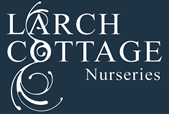News
Top Plants for Attracting Butterflies
Encouraging butterflies to your garden with a range of nectar-rich plants is a fantastic way to add colour, fragrance and interest to your borders, at the same time as supporting the conservation of these beautiful insects. There are 58 species of butterflies native to the UK, many of which are vulnerable and in decline, so any assistance we gardeners can provide is a fantastic way to contribute to the ecological health of our environment. Here are some of our favourite plants that fit the bill when it comes to attracting these important pollinators.
Buddleja
Often referred to as the butterfly bush for obvious reasons, these plants come in a range of sizes from tall arching shrubs like Buddleja weyeriana ‘Bicolor’ to smaller, more compact varieties like our Buddleja ‘Flutterby-Petite’ range. With a long flowering season, and deliciously scented flowers, these plants provide a very valuable source of nectar for visiting butterflies and bees.
Sedum
The small, tightly-packed flowerheads of sedum provide cushions of colour in the border and are a favourite with pollinators. Try Sedum ‘Firecracker’ with its hot pink flowers or the lovely yellow flowers of Sedum ‘Honey Gold’ to entice your flying visitors.
Verbena Bonariensis
Beloved by butterflies, Verbena Bonariensis has densely clustered panicles of lilac purple flowers that flower in late summer. For the middle or back of the border try Verbena Bonariensis ‘Violetta’ which grows to a height of 5 feet, alternatively, Verbena Bonariensis ‘Lollipop’ offers a fabulous choice for the front of the border, growing to a height of only 24 inches.
Echinops
Echinops offers a structural beauty in the border with its tall spikes of metallic blue or white spherical flowerheads borne atop wonderful foliage. Try Echinops Bann. ‘Blue Globe’ or Echinops gmelinii ‘Snow King’ with its golf ball sized white blooms and lovely dark green foliage.
Echinacea
Echinacea is an erect, clump-forming perennial that produces beautiful, tall-stemmed daisy flowers, from the beautiful tangerine orange of Echinacea ‘Julia’ through to white varieties such as Echinacea purpurea ‘ Avalanche’ and the deep pink of Echinacea purpurea ‘Kim’s Knee High’, amongst many others.
Aster
Asters provide daisy like flowers late in the summer through to autumn, providing a valuable nectar resource toward the end of the season. A clump forming perennial, asters come in a range of heights and colours from lilac blues, pinks and purples. For a splash of late season pink try Aster eric. ‘Pink Cloud’, for lilac blue, Aster amell. ‘Rudolph Castle’ or for white, Aster eric. ‘White Heather’.
Hebe
Hebes provide colour and structure in the border and have the added bonus of being hardy in our temperamental British climate. They are often evergreen and come in a range of heights that suit border or container cultivation. Try Hebe ‘Nicola’s Blush’ AGM which provides pale shell-pink flowers from Jun-Sep or Hebe ‘First Light’, a variety with colourful red tips on evergreen blue-grey foliage and clusters of pink flowers in midsummer.
Inula
Inulas are clump forming perennials which bear large, yellow daisy-like flowers and beloved by a wide range of butterflies. Try Inula ensifolia, with its small lance-like leaves and beautiful yellow flowers which repeat flower for several months in the summer.
Ligustrum
Shrubs can often be overlooked when considering butterfly-friendly planting, but the fragrant white flowers of Ligustrum (Privet) attracts many species of native butterflies including the speckled wood, comma, holly blue, red admiral and peacock butterfly. We have a wide range of Ligustrum available at Larch Cottage including Ligustrum ibota ‘Musli’ with its fragrant, tubular white flowers and Ligustrum jap. ‘Korea Dwarf’ whose lovely, white flowers bear a resemblance to lilacs.
Hedera helix
Hedera (ivy) brings several benefits for butterflies, providing nectar for late flying species like red admiral, while the holly blue butterfly lays its eggs on the flower buds in late summer. Hedera also provides shelter for overwintering butterflies including the brimstone, peacock and small tortoiseshell butterflies.

(Blog post written by Jo Chamberlain)

